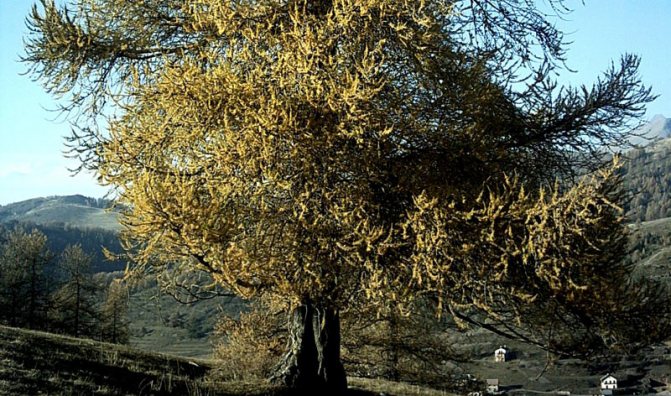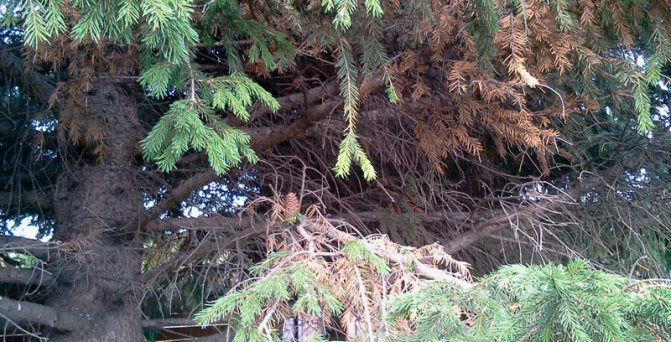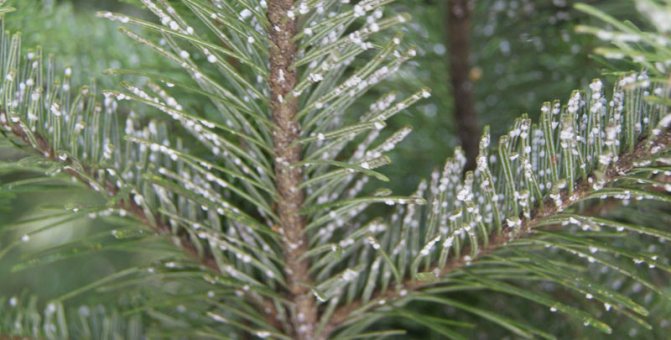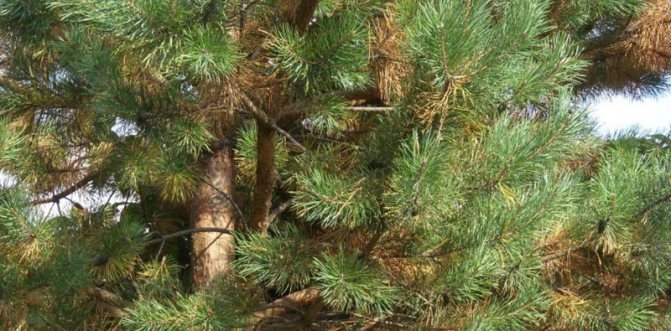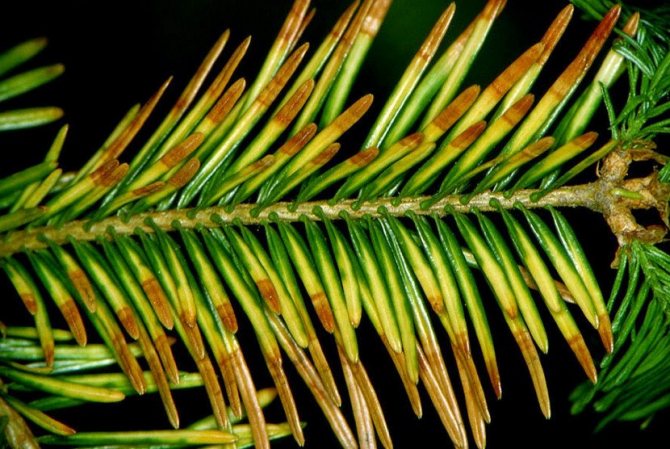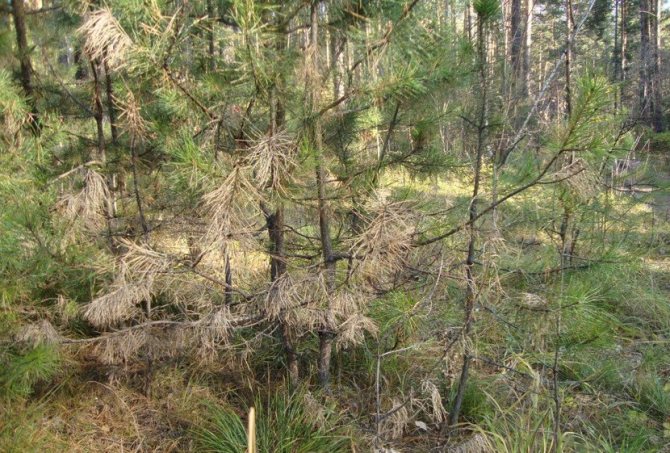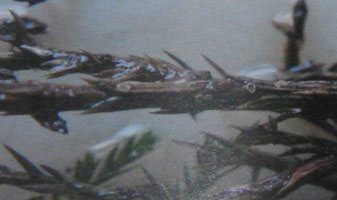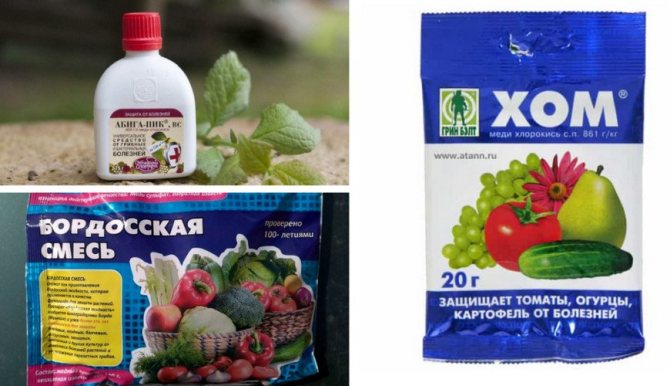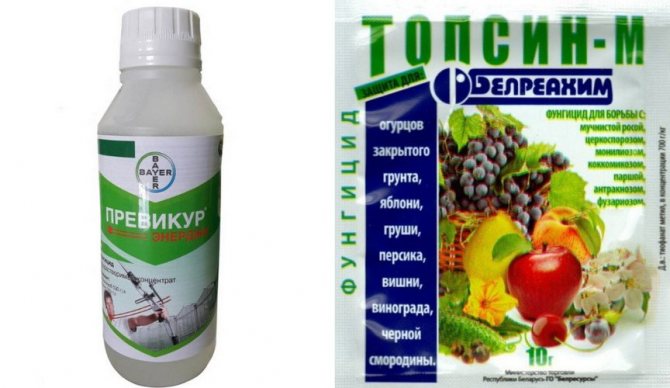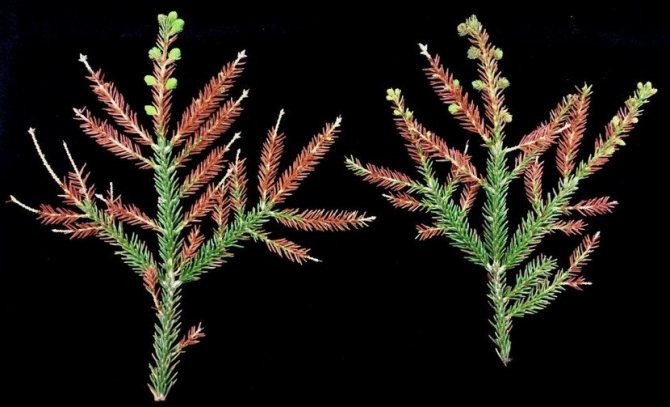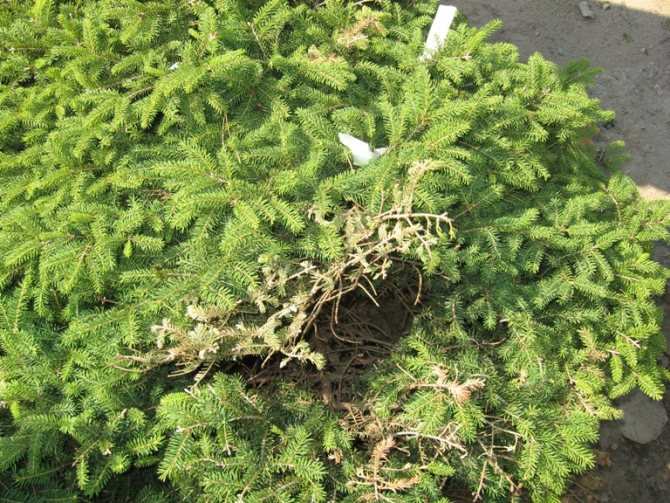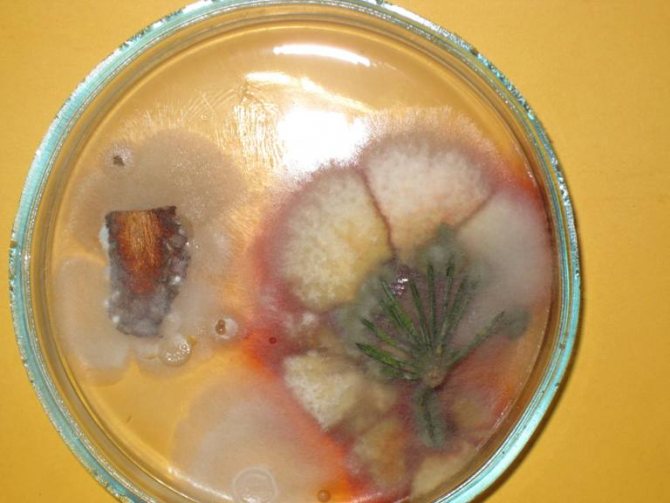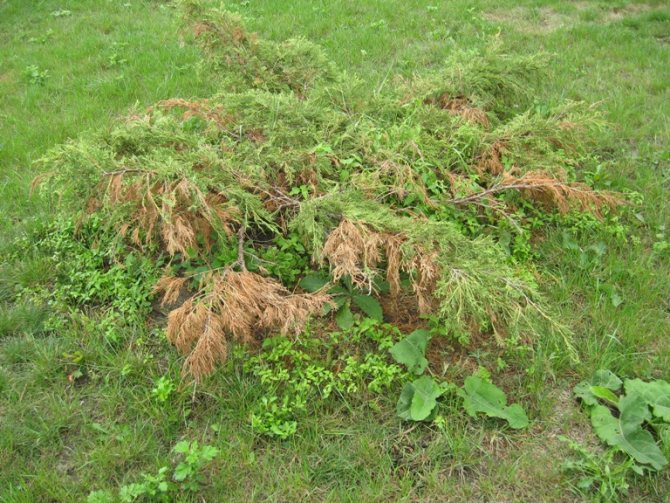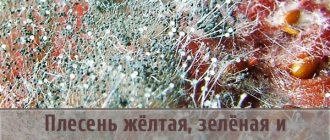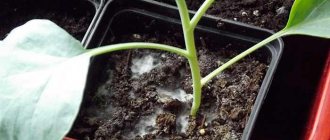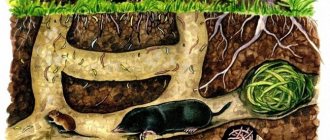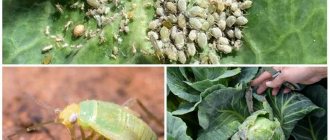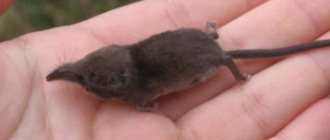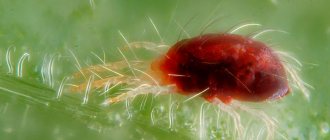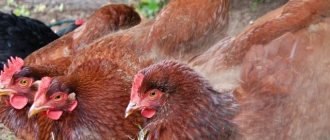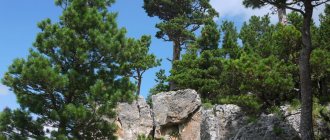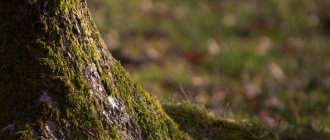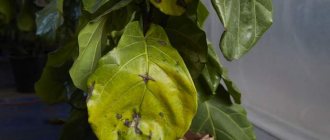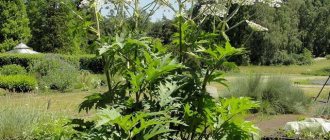The owners of summer cottages more and more prefer to plant conifers on their "landscapes". They, it would seem, are unpretentious, they are easier to combine with other plants, without having any special education or experience. It seems that conifers do not require much maintenance. It turns out that even these thorny giants are susceptible to disease. One of the most common of them is shute. You will learn what types of it exist, how to deal with it, what preventive measures need to be taken.
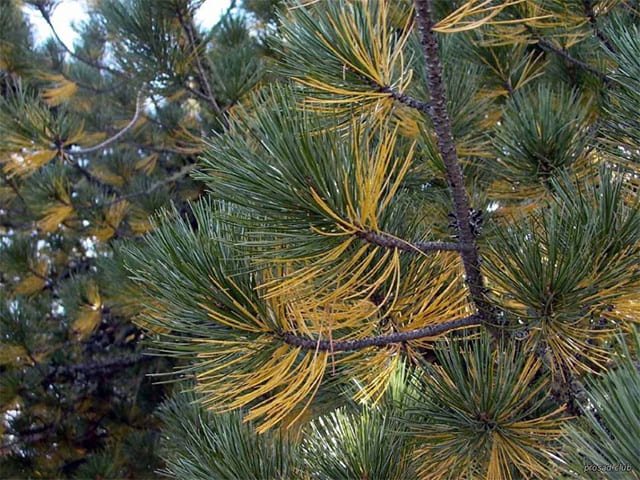
Description
In parks, squares, nature reserves or in the country - you can find an infected tree everywhere. The color of the needles, the condition of the branches, partially bare spots on the trunk are all signs of the appearance, active reproduction of a harmful fungus.
How does the disease work? Depending on the type of pathogenic fungus, infection occurs in different ways:
- Through the snow cover.
- From a nearby infected tree.
- Through the soil.


These mushrooms love dampness, high humidity, so most often the tree becomes infected in the spring-autumn period. Once in the bark, the fungus begins to spread rapidly, blocking the entry of nutrients into the needles, which change color, dry out, and fall off.
Shute is most dangerous for young 2-3-year-old seedlings. Such young animals instantly react to the attack of the pathogen, it is almost always impossible to save him. Therefore, young seedlings must be looked after, processed in a timely manner.
A mature tree is less susceptible to impact. Mainly the lower branches are affected. However, if you do not take care of the patient, do not treat him, even an adult culture will not be able to fight the pest for a long time.
What a disease
From the German language, the word schütten, from which the name of the pine disease is derived, is translated as "to pour". With the course of the disease, the needles of trees lose their juicy green color and crumble. The causative agent of shute is ascomycetes or marsupial mushrooms. Parasites reproduce by spores, can be carried by wind, insects.
Did you know? Science knows 64 thousand species of ascomycetes. Not all varieties are pathogenic, baker's and brewer's yeast belong to the family, as well as many specimens that are used in pharmacology in the manufacture of medicines.
The danger of the disease is that it affects both young pines and adults over 15 years old, trees. Without appropriate treatment, the culture loses its decorative properties and gradually dies.
If the problem is not detected in time, not treated, then during the development of the plant there will be violations:
- in tissue respiration;
- the process of photosynthesis;
- the ability to absorb food and moisture;
- synthesis of substances responsible for growth and fruiting.
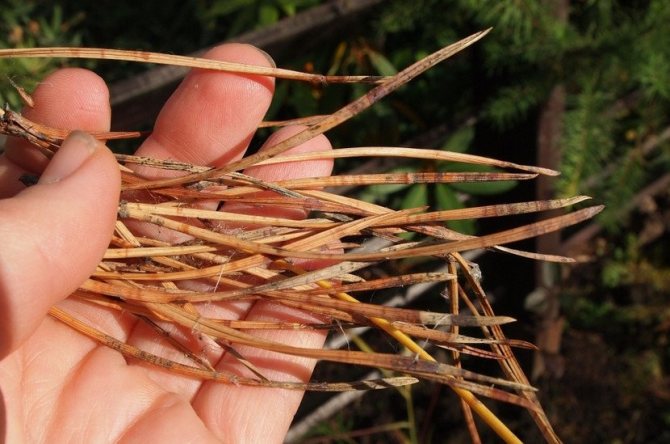

Symptoms
Coniferous crops are susceptible to various diseases, including those that more often affect broad-leaved or fruit trees. How to distinguish a shute from another infectious or fungal lesion?
The main symptoms of the fungus are:
- The appearance of gray, white, moldy or spiderweb plaque;
- Changing the color of the needles from green or blue to yellow, rusty, brown;
- The appearance of black spots, other lesions on the needles;
- Abundant shedding;
- Bare branches or entire areas on the svola;
- Places entwined with cobwebs, mold.
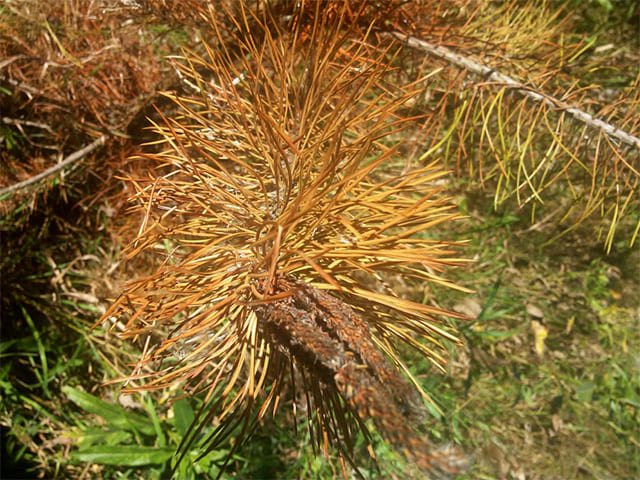

Types of shute
From what kind of coniferous tree is affected, what kind of fungus the disease is caused by, several types are distinguished:
- The present.Signs become visible in the spring. A white coating appears on the needles, resembling dew drops from afar. Over time, the plaque darkens, and the needles acquire a brown tint, begin to crumble abundantly. In autumn, on the fallen needles, on the one that is still on the tree, oblong black spots become noticeable - these are winter shelters of pathogens.
- Brown. Fir, spruce, pine, juniper, cedar are susceptible to it. After winter, a dense cobweb bloom of black or brown color is noticeable on the affected plants. The needles are glued together, in this form they can stay on the branch for a long time.
- Common shute of spruce and pine. Provokes a color change to red-brown, the appearance of black longitudinal stripes. The needles do not crumble right away, they can stay on the branch for a year or two.
- Snowy. The disease got this name by the way the fungus entered the trunk: through the snow. The mushroom feels good, develops in the thickness of the snow. The higher the snow cover, the more the tree is affected. The first symptoms: the appearance of an off-white or gray coating, similar to a cobweb.
- Juniper and fir. The main symptom is the yellow or brown color of the needles. As a rule, old, last year's needles are affected.
- Gray pines. Infection occurs during the summer months, more often in June. Infected needles turn yellow and then turn gray.
- Shute the larch. A dangerous disease from which, on average, up to 40% of larch trees are affected. Some types of this culture are more susceptible, some less. If the territory (reserve or park) is planted with one species, with a weak resistance against the fungus, it is possible that all of them will be infected. The pathogen has a high reproduction rate. The first symptoms: the appearance of black dots on the tips of the needles. Then the needles turn brown, twisted in places.
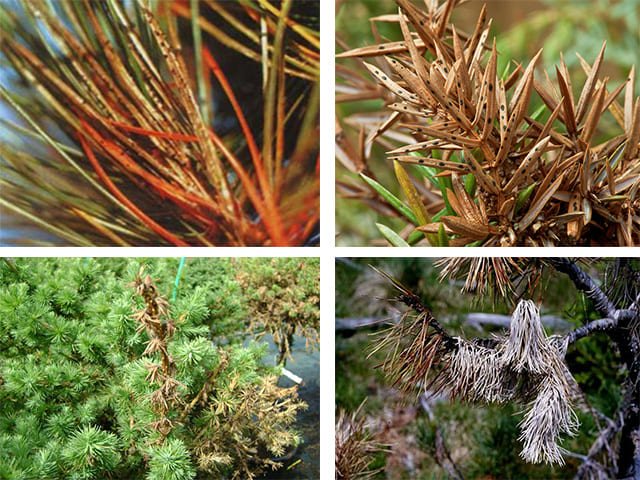

Coniferous diseases - we recognize and treat
Conifers do not lose their attractiveness and decorativeness throughout the year, and, as a rule, live longer than many deciduous species. They are an excellent material for creating compositions due to the varied shape of the crown and the color of the needles. The most widely used in professional and amateur gardening are such coniferous shrubs as junipers, yew, thuja; from wood - pine, larch, spruce. Therefore, information about their main diseases is relevant. The issue of treating conifers is especially acute in the spring, when you have to deal with burning, winter desiccation and infectious diseases on plants weakened after winter.
First of all it should be mentioned non-communicable diseases, caused by the negative impact on the growth and development of conifers of unfavorable environmental conditions. Although conifers are demanding on high soil and air humidity, excessive moisture associated with natural waterlogging, rising groundwater levels, spring floods and heavy autumn precipitation leads to yellowing and necrotization of the needles. The same symptoms very often appear due to a lack of moisture in the soil and low air humidity.
Thuja, spruce, yews are very sensitive to drying out of the roots, therefore, immediately after planting, it is recommended to mulch their trunks with peat and grass cut from lawns, if possible, maintain mulching during the entire period of their growth, and water regularly. The most drought-resistant are pines, thuja and junipers. In the first year after planting, it is advisable to spray young plants with water in the evening and shade them in the hot period. The overwhelming majority of conifers are shade-tolerant; when grown in open sunny places, they may stagnate, their needles may turn yellow and even die off. On the other hand, many of them do not tolerate strong shading, especially light-loving pines and larch trees.To protect the bark from sunburn, it can be whitewashed with lime or special whitewashing in early spring or late autumn.
The condition and appearance of plants largely depend on the supply of nutrients and the balance of their ratios. The lack of iron in the soil leads to yellowing and even whitening of the needles on individual shoots; with a lack of phosphorus, young needles acquire a red-purple hue; with a nitrogen deficiency, the plants grow noticeably worse, become chlorotic. The best growth and development of plants occurs on well-drained and well-cultivated soils, provided with nutrients. Slightly acidic or neutral soil is preferred. It is recommended to carry out top dressing with special fertilizers intended for conifers. In summer cottages, conifers can suffer from frequent visits by dogs and cats, which cause an excessive concentration of salts in the soil. In such cases, shoots with red needles appear on thuja and juniper, which subsequently dry out.
Low temperatures in winter and spring frosts cause freezing of the crown and roots, while the needles become dry, acquire a reddish color, die off, and the bark cracks. The most winter-hardy are spruces, pines, fir, thuja, junipers. Branches of coniferous plants can break off from the gullet and snow break in the winter.
Many conifers are sensitive to air pollution from harmful industrial and automotive gases. This is manifested, first of all, by yellowing, starting from the ends of the needles and their falling off (dying off).
| Snowbreaker - the branches could not stand snow load | Shrinkage from shading |
Conifers are rarely severely affected. infectious diseases, although in some cases they can suffer greatly from them. Young plants are generally less resistant to a complex of non-infectious and infectious diseases; their resistance increases with age.
Species of soil-dwelling fungi of the genera Pytium (Pitium) and Rhizoctonia (Rhizoctonia) lead roots of seedlings to decay and withering awayoften cause significant losses of young plants in schools and containers.
The causative agents of tracheomycotic wilting are most often the anamorphic fungi Fusarium oxysporum, which are soil pathogens. The affected roots turn brown, the mycelium penetrates into the vascular system and fills it with its biomass, which stops the supply of nutrients, and the affected plants, starting from the upper shoots, wither. The needles turn yellow, turn red and fall off, and the plants themselves gradually dry out. Seedlings and young plants are most affected. The infection persists in plants, plant debris and spreads with infected planting material or infected soil. The development of the disease is facilitated by: stagnant water in low areas, lack of sunlight.
Use healthy planting material as protective measures. Timely remove all dried plants with roots, as well as affected plant debris. For preventive purposes, short-term soaking of young plants with an open root system is carried out in a solution of one of the drugs: Baktofit, Vitaros, Maxim. At the first symptoms, the soil is spilled with a solution of one of the biological products: Fitosporin-M, Alirin-B, Gamair. For prevention purposes, the soil is spilled with Fundazol.
Gray mold (rot) affects the aerial parts of young plants, especially in unventilated areas with strong thickening of plantings and insufficient lighting. Affected shoots turn gray-brown, as if covered with a layer of dust.
In addition to these diseases, which are widespread in deciduous species, there are diseases that are characteristic only of conifers. First of all, they include shute, the causative agents of which are some types of ascomycete fungi.
| Real shute pine | Common pine shute |
Real shute, the causative agent of which is the fungus Lophodermium seditiosum, is one of the main reasons for the premature fall of needles in pine. Young plants are mainly affected, incl. in the open ground of nurseries, and weakened trees, which can lead to their death due to strong falling of needles. During spring and early summer, the needles become brown and fall off. In autumn, small yellowish dots are noticeable on the needles, gradually growing and turning brown, later on the dead, crumbling needles, dotted black fruit bodies are formed - apothecia, by which the fungus persists.
Common pine shute, which has similar symptoms and developmental cycle, causes Lophodermium pinastri. In the fall or more often in the spring of next year, the needles turn yellow or become reddish-brown and die off. Then, the fruiting bodies of the fungus are formed on it in the form of small black strokes or dots, blackening and increasing by autumn. Thin dark transverse lines appear on the needles. Dispersion of spores and infection of needles is facilitated by moderately warm weather, drizzling rains and dew. Weakened plants in nurseries and crops up to 3 years of age and self-seeding of pine are more often affected and killed.
| Snow Shute | Brown shute pine |
Snow Shute is caused by the fungus Phlacidium infestans, which mainly affects pine species. It is especially harmful in areas with many snows, where it sometimes completely destroys the renewal of Scots pine.
It develops under snow cover and develops relatively quickly even at temperatures around 0 degrees. The mycelium grows from needles to needles and often further to neighboring plants. After the snow melts, the dead needles and often shoots turn brown and die off. Diseased plants are covered with grayish, rapidly disappearing mycelium films. During the summer, the needles die off, become reddish-red, later light gray. It crumbles, but hardly falls off. In twisted pine (Pinus contorta), the dead needles are more reddish than in Scots pine. By the fall, apothecia become visible, like small dark dots scattered over the needles. Ascospores from them are spread by air currents on living pine needles just before they are usually covered with snow. The development of the fungus is favored by drizzling rains, falling and melting snow in autumn, mild, snowy winters, and prolonged spring.
Brown shute, or brown snow mold of conifers affects pines, fir, spruce, cedars, junipers, caused by the fungus Herpotrichia nigra. It is found more often in nurseries, young stands, self-seeding and young undergrowth. This disease manifests itself in early spring after the snow melts, and the primary infection of needles with ascospores occurs in the fall. The disease develops under snow at temperatures not lower than 0.5 ° C. The defeat is found after the snow melts: on the brown dead needles, a black-gray cobweb bloom of the mycelium is noticeable, and then the pinpoint fruiting bodies of the pathogen fungus. The needles do not fall off for a long time, thin branches die off. The development of the disease is facilitated by high humidity, the presence of depressions in the cultivated areas, and the thickening of plants.
Signs of defeat juniper schütte (the causative agent is the fungus Lophodermium juniperinum) appear at the beginning of summer on last year's needles, which acquire a dirty yellow or brown color and do not crumble for a long time. From the end of summer on the surface of the needles, round fruit bodies, black up to 1.5 mm, are noticeable, in which marsupial sporulation of the fungus remains in winter. The disease develops intensively on weakened plants, in humid conditions, and can lead to plant death.
Protective measures against shute include the selection of planting material that is sustainable in origin, giving the plants as much resistance as possible, timely thinning, and the use of fungicidal spraying. Shaded plants are most susceptible to disease.The harmfulness of the shute increases with high snow cover and its prolonged melting. In forests and parks, instead of natural regeneration, planting of plants of the necessary origin is recommended. The planted plants are more evenly distributed over the area, making it more difficult for mycelium to infest one plant from another, in addition, they quickly reach a height above the critical level. In those areas where Schütte damages Scots pine, you can use twisted pine or European spruce, which is extremely rarely affected. Only healthy planting material should be used. It is recommended to remove fallen diseased needles in a timely manner to cut off dried branches.
Fungicidal treatments must be used in nurseries. Spraying with copper-containing and sulfuric preparations (for example, Bordeaux mixture, Abiga-Peak or HOM, lime-sulfur broth) in early spring and autumn effectively reduces the development of diseases. When the disease manifests itself to a strong degree in the summer, the spraying is repeated.
| Brown Juniper Shute |
Pine wither |
Of particular importance for conifers are rust diseasescaused by fungi of the Basidiomycot division, class Uredinomycetes, affecting the needles and bark of shoots, in fact all of their pathogens are of different households, and pass from conifers to other plants, causing their defeat. Here is a description of some of them.
Cones rust, spruce wither... On the inner side of the scales of spruce, which is the intermediate host of the rust fungus Puccinia strumareolatum, rounded, dusty dark brown eciopustules appear. The cones are wide open, hanging for several years. The seeds are not germinable. Sometimes shoots are bent, the disease in this form is called spruce wither. The main host is bird cherry, on the leaves of which small round light purple uredinio, then black teliopustules appear.
Pine wither causes a variety of rust fungus Melampsora pinitorqua. The ecial stage develops on the pine, as a result of which its shoots bend in an S-shape, the top of the shoot dies off. Aspen is the main host. In summer, small yellow urediniopustules form on the underside of the leaves, the spores of which cause massive infection of the leaves. Then, by autumn, black teliopustules are formed, in the form of which the fungus overwinters on plant debris.
Rust of pine needles cause several species of the genus Coleosporium. It mainly affects the two-doubled species of the genus Pinus, it is found everywhere in their ranges, mainly in nurseries and young stands. Etsiostadia of the fungus develops in the spring on pine needles. Yellow vesicle-like eciopustules are located in disarray on both sides of the needles, uredo- and teliospores are formed on coltsfoot, wild grass, sow thistle, bellflower and other herbaceous plants. With a strong spread of the disease, the needles turn yellow and fall off prematurely, and the plants lose their decorative effect.
The diverse mushroom Cronartium ribicola causes pine whirligig (five-coniferous pines), or columnar currant rust. First, the needles become infected, gradually the fungus spreads into the bark and wood of branches and trunks. In places of lesion, resin is released and eciopustulae in the form of yellow-orange vesicles appear from ruptures of the cortex. Under the influence of the mycelium, a thickening forms, eventually turning into open wounds, the overlying part of the shoot dries up or bends. The intermediate host is the currant; gooseberries can rarely be affected, numerous pustules in the form of small columns, orange, then brown, are formed on the underside of their leaves.
| Pine needles rust | Juniper rust |
Mushrooms of the genus Gymnosporangium (G. comfusum, G. juniperinu, G. sabinae), pathogens juniper rust infect cotoneaster, hawthorn, apple, pear, quince, which are intermediate hosts.In the spring, the disease develops on their foliage, causing the formation of yellowish outgrowths (pustules) on the underside of the leaves, and round orange spots with black dots are visible on the upper side (ecial stage). From the end of summer, the disease passes to the main host plant - juniper (teliostadia). From autumn and early spring, yellow-orange gelatinous masses of sporulation of the pathogen fungus appear on its needles and branches. Fusiform thickenings appear on the affected parts of the branches, and the death of individual skeletal branches begins. On the trunks, often on the root collar, swellings and sagging are formed, on which the bark dries out and shallow wounds open. Over time, the affected branches dry out, the needles turn brown and crumble. The infection persists in the affected juniper bark. The disease is chronic, almost incurable.
Rust of birch, larch - Melampsoridium betulinum. Small yellow pustules appear on the underside of birch and alder leaves in spring, yellowing, the growth of shoots decreases. Larch, which is the main host, turns yellow needles in summer.
As protective measures against rust diseases it is possible to recommend spatial isolation from the affected plants that have a common causative agent of the disease. So, you should not grow poplar and aspen next to pines, five-coniferous pines should be isolated from planting black currants. Cutting out affected shoots, increasing resistance through the use of micronutrient fertilizers and immunostimulants will reduce the harmfulness of rust.
Causative agents desiccation of juniper branches there may be several fungi: Cytospora pini, Diplodia juniperi, Hendersonia notha, Phoma juniperi, Phomopsis juniperovora, Rhabdospora sabinae. Drying of the bark and the formation of numerous brown and black fruit bodies on it are observed. The needles turn yellow and fall off, the branches of the bushes dry out. The infection persists in the bark of affected branches and unharvested plant debris. Thickened planting of plants and the use of contaminated planting material contribute to the spread.
Shrinking juniper branches | Thuja pestalocious wilting |
Tui can often also appear shrinking, drying of shoots and branches, caused more often by the same fungal pathogens. Typical manifestation is yellowing and dropping of leaves from the ends of the shoot, browning of the young growth of branches; in humid conditions, sporulation of fungi is noticeable on the affected parts.
Thuja pestalocious wilting, the causative agent of which is the fungus Pestalotiopsis funerea, causes a necrotic disease of the bark of branches and the browning of the needles. On the affected tissues, an olive-black sporulation of the fungus is formed in the form of individual pads. With a strong drying of the branches in hot weather, the pads dry out and take the form of scabs. With an abundance of moisture, a grayish-black mycelium develops on the affected needles and bark of the stems. Affected branches and needles turn yellow and dry out. The infection persists in the affected plant debris and in the bark of drying branches.
Sometimes on juniper plants appears biorella cancer... Its causative agent, the fungus Biatorella difformis, is the conidial stage of the marsupial fungus Biatoridina pinastri. With mechanical damage to the branches, over time, pathogenic microorganisms begin to develop in the bark and wood, causing bark necrosis. The fungus spreads in the tissues of the bark, the bark turns brown, dries up, cracks. The wood gradually dies off and longitudinal ulcers form. Over time, rounded fruiting bodies are formed. The defeat and dying off of the bark leads to the fact that the needles turn yellow and dry out. The infection persists in the bark of the affected branches.
Causative agent nectria juniper cancer is the marsupial fungus Nectria cucurbitula, with the conidial stage Zythia cucurbitula. On the surface of the affected bark, numerous brick-red sporulation pads up to 2 mm in diameter are formed, over time they darken and dry out.The development of the fungus causes the death of the bark and bast of individual branches. The needles turn yellow and fall off, affected branches and whole bushes dry up. The infection persists in the bark of affected branches and plant debris. The spread of infection is facilitated by thickened plantings and the use of contaminated planting material.
| Biotorella Juniper Cancer | Juniper Alternaria |
In recent years, in many cultures, incl. conifers, fungi of the genus Alternaria became active. Causative agent Alternaria juniper is the fungus Alternaria tenuis. On the affected needles, which become brown, and on the branches, a velvety bloom of black appears. The disease manifests itself when the plantings are thickened on the branches of the lower tier. The infection persists in the affected needles and bark of branches and in plant debris.
To combat drying out and alternaria, you can use preventive spraying of plants in spring and autumn with Bordeaux mixture, Abiga-Peak, copper chloride. If necessary, in the summer, spraying is repeated every 2 weeks. The use of healthy planting material, timely pruning of affected branches, disinfection of individual wounds and all sections with a solution of copper sulfate and smearing with oil paint on natural drying oil significantly reduce the prevalence of diseases.
Larch cancer causes the marsupial mushroom Lachnellula willkommii. Its mycelium is distributed in the bark and wood of larch branches during its spring and autumn growth dormancy. The next summer, new bark and wood are built up around the wound. As preventive protective measures, it is recommended to plant resistant species of larch, grow them in favorable conditions, do not thicken, and avoid frost damage.
Some types of mushrooms can settle on the stems of conifers. tinder fungi, forming on the bark rather large fruiting bodies, annuals and perennials, causing cracking of the bark, as well as rot of roots and wood. For example, pine wood affected by a root sponge is first purple, then white spots appear on it, which turn into voids. The wood becomes cellular, sieve.
Thuja stem rot is often caused by tinder fungi: the pine sponge Porodaedalea pini, which causes a variegated red rot of the trunk, and the Schweinitz tinder fungus, Phaeolus schweinitzii, which is the causative agent of brown central fissured root rot. In both cases, the fruiting bodies of the fungus are formed on the rot of the wood. In the first case, they are perennial, woody, the upper part is dark brown, up to 17 cm in diameter; in the second mushroom, the fruit bodies are annual in the form of flat caps, often on legs, arranged in groups. Affected plants gradually die, and unharvested dried plants and their parts are a source of infection.
It is necessary to cut out sick, damaged, dried branches in a timely manner, cut off the fruiting bodies of tinder fungi. Wound injuries are cleaned and treated with putty or varnish-based paint. Use healthy planting material. You can carry out preventive spraying of plants in spring and autumn with Bordeaux mixture or its substitutes. Grubbing the stumps is obligatory.
Control measures, prevention: expert advice
In order not to expose your evergreen pets to the risk of infection, it is necessary to provide them with comfortable conditions for growth. To do this, you need to take preventive measures to combat pathogenic fungi:
- It is best to plant conifers in sandy soil on a hill. Clay soils are not suitable, as they retain moisture for a long time, this contributes to the appearance and reproduction of fungi. Lowlands or natural depressions are not suitable for planting pines or other conifers. For the same reason - the accumulation of moisture.
- It is necessary to constantly clean the area from fallen needles.
- Young seedlings should be isolated from adult crops, as they are weaker and susceptible to fungal diseases. It is difficult to save them in case of infection.
- In summer, in spring, as a preventive measure, it is necessary to treat trees with solutions - Bordeaux liquid, fungicidal or other copper-containing preparations.
If, nevertheless, you find infected needles, start treatment immediately. Treat with the same solutions as for prophylaxis, but more often - every 15-20 days. The dosage must be calculated depending on the type of infected culture and the type of disease.
The plant itself, the soil, need to be treated with drugs. For soil treatment, biofungicides and phytosporins can be used.
Be sure to cut off the affected branches, clear the ground from the crumbling diseased needles. Incinerate waste.
Causes of occurrence
Fungal disease occurs primarily in conditions of high humidity. Plants planted too close to each other are poorly ventilated, the near-stem circle is clogged with parasitic herbs.
Excess moisture is possible on clayey soils, in places where groundwater is located close to the surface. In such areas, the root system is soaked, which is immediately attacked by mushrooms. An excess of watering and fertilizers can provoke illness, weaken the immune system. High moisture content is found in dense canopy, so thinning pruning is important.
Important! An annual, sanitary, spring haircut is necessary, since the damaged shoots are weakened and open to all sorts of diseases.
How to protect spruce from disease
Pests rarely attack healthy, properly planted spruce. The soil should be light, moist and slightly acidic. Fertilization helps to improve the growth of spruce trees, the development of their root system, and also protects them from diseases and pests.
It is more difficult to detect pests on conifers than on deciduous ones, but the measures to combat common pests - aphids, scale insects, butterfly caterpillars - are the same for all plants.
Dark conifers (spruce, fir, cedar pine) are very sensitive to damage, the loss of 70–80% of the needles usually leads to the death of the tree.
Prevention and ... prevention again!
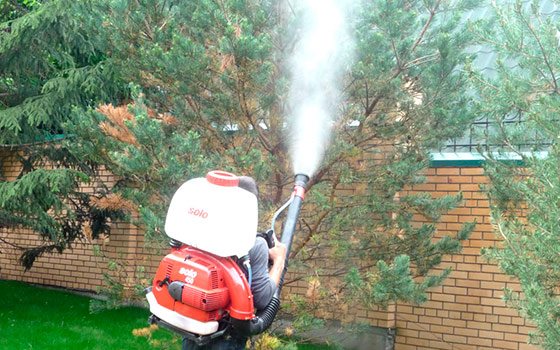

How to treat spruce from pests and diseases? Infected specimens require immediate treatment.
- Fight against spruce diseases is carried out by any fungicidal preparations. A liquid solution is used to treat the soil around the near-stem circle of plants and shed the root system with it.
- In the spring, at the beginning of the growing season, the crown of the needles is treated with preparations containing copper.
- All diseased plants should be immediately removed from the site, at the first symptoms of infection. Since viruses, infections and fungi have the ability to spread very quickly, infecting healthy plantings.
- From time to time, just sprinkle ash on the conifers before it rains. After this procedure, your plants will acquire a beautiful appearance and health.
You can see about the pests of conifers here.
Competent and timely care, care and attention are all that an evergreen plant needs for full growth, a healthy and decorative look.
Rust of pine needles ate control measures. Spruce needles rust / Spruce needles golden rust
Fungus disease.
Spruce needles rust:
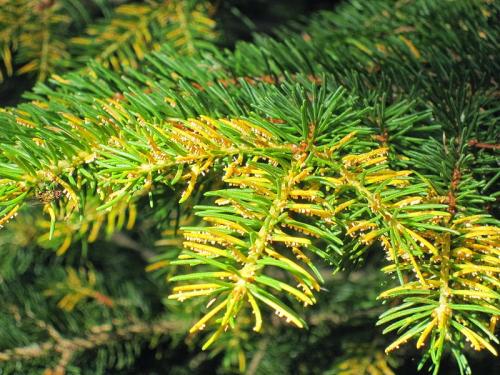

The fungus Chrysomyxa ledi is a diverse fungus with a full development cycle. Etsiostadia develops on spruce needles in the form of numerous small cylindrical bubbles filled with a yellow mass of eciospores. Uredinio- and telio-stages are formed on the underside of rosemary leaves. In spring, teliospores germinate in basidia with basidiospores, which re-infest spruce needles. Mature trees, undergrowth, less often - spruce in crops and nurseries are affected. The disease occurs in different types of forest growing conditions, where wild rosemary is a part of the ground cover. With an increase in the share of the latter in the living cover, the level of the disease rises.Spruce is especially strongly affected in good lighting conditions. Under optimal conditions for the development of the pathogen, the disease can take the character of an epiphytotic. Massive rust damage leads to the fall of the needles, which is especially strongly reflected in the undergrowth, causing it to weaken, and often dry out.
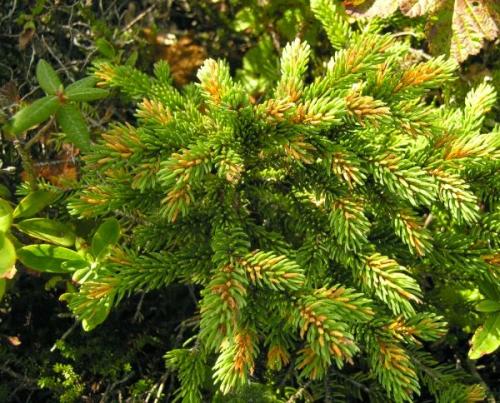

The disease is widespread in the European part of Russia, Siberia and the Far East.
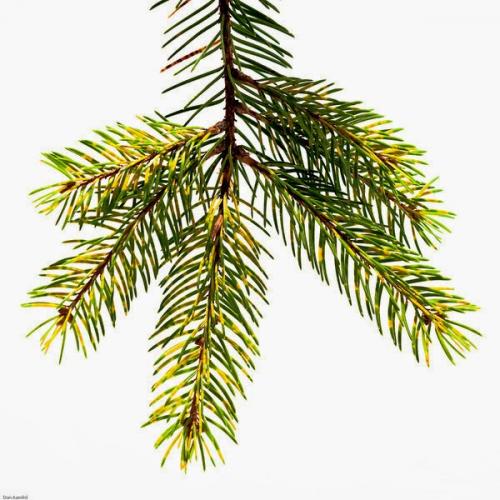

The fungus Chrysomyxa abietis causes golden rust on needles. The causative agent is single-owner, in the development cycle of which telio- and basidiostages are formed. Young needles are affected in the spring, immediately after bud break. Infection is carried out by basidiospores formed on last year's diseased needles. In summer, small, yellowish dotted spots appear on the affected needles, which then increase and, merging, can cover the entire surface of the needles. The next spring, in place of the spots, the teliostadia of the fungus is formed, which looks like bright orange or yellow-brown, at first waxy, elongated along the pads up to 1 cm long.When teliospores germinate and form basidia with basidiospores, the pads become velvety. After the spread of basidiospores, the needles fall off.
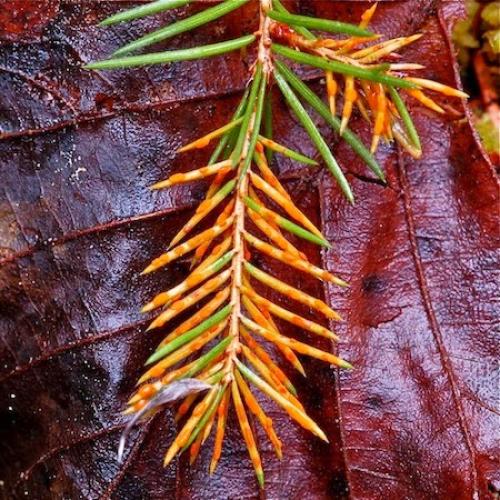

The disease affects spruce at the age of 10-20 years. Dense young stands under the forest canopy are especially affected. During the years of the most active development of the disease, a massive fall of needles occurs. Systematically repeated lesions lead to the weakening of trees, less often to death.
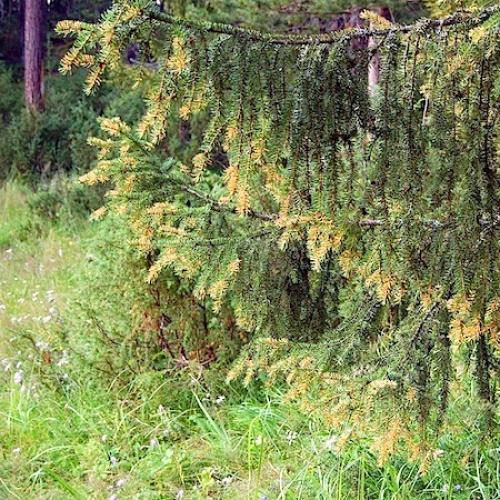

Golden rust is widespread in the north of the European part of Russia and in Western Siberia.
Control measures: establishment of nurseries and spruce crops at a distance of at least 250 m from spruce plantations (especially if there are wild rosemary in them); destruction of fallen needles; spraying seedlings and young crops of ate with 1% Bordeaux liquid.
Rust diseases of conifers
In this section of the article, we will consider a special series of diseases of conifers. They are caused mushrooms Basidiomycot
that infect the bark of shoots and needles. The disease is quite contagious and can spread quickly even to other plants.
Spruce whirligig or bud rust
This disease occurs on spruce trees thanks to the bird cherry, it is she who is the legislator of the disease. It develops on the inner side of the cones, more precisely on the scales, forming dusty areas of dark brown color. Diseased cones lose fertility, but can remain on the tree for up to several years. During illness, young shoots can change shape, needles fall off.
Pine wither
The disease is caused by a fungus of various households. Melampsora pinitorqua
and is developing quite rapidly. Passing the ecial stage, the pine shoots bend, and the top dies off altogether.
Needle rust
Rust is found in almost all types of conifers. Its nature is classic, development takes place in a certain, warm and humid environment. The disease affects the needles of trees and the plant loses its decorative appearance. Sometimes, when mixed with other diseases, the rust of the needles can lead to the death of the plant.
Treatment
Before talking about the treatment of conifers, it is advisable to familiarize yourself with the methods of prevention.
Find out how to properly transplant a pine tree to the site.
You can prevent the disease if you follow some measures:
- It is better to select seedlings in the nursery, checking their appearance.
- Planting crops should be carried out on a level or elevated area where moisture does not accumulate.
- The soil should be sandy or sandy loam, it does not retain water, but passes it through perfectly.
- Need protection from drafts and gusty winds, at least for young specimens.
- If the groundwater is close to the surface, arrange a good drainage layer into the planting hole.
- Remove fallen needles and branches from the trunk circle, spores can hibernate in them.
- The planting must not be thickened. Keep a distance of at least 4 m between the plants, uproot the entire self-seeding plant immediately.
- Perform sanitary and thinning pruning annually.
- In the spring, trees need preventive treatment with a Bordeaux mixture of 1%.
Video: spring treatment of conifers from diseases and pests
The plant is treated with the same drug, only with a 3% solution, carrying out 2-3 sprays until the symptoms disappear. You can use the Hom fungicide, which has received good reviews from gardeners. Pine is sprayed with a solution prepared in a proportion of 40 g of the drug per 10 l of water. The procedure is carried out in the evening, preferably in cloudy weather. If necessary, the treatment is repeated after 3 weeks.
Did you know? Pine essential oil is used in the treatment of neuralgic and psychiatric disorders. Even pine wood furniture has a calming effect, so outdoor benches for sanatoriums and hydropathic establishments are made of it.
Knowing the description of the disease and the cause of its occurrence, you can take preventive measures against its spread. The more attentive the gardener is, the less chance the fungus has. Pay due attention to the ephedra and it will thank you with a beautiful view.
Pests and the fight against them
Spruce pests are one of the main causes of tree death, both in the gardening of conifers and in open nature. The common harmful insects of this plant include spruce aphids, hermes, mealybugs, bark beetles, spider mites and bast beetles, although the spruce barbel is also harmful. Each of the pests has characteristic features, taking into account which gardeners select effective methods for solving the problem.
Pay attention to the information on whether there is a difference between a spruce and a tree.
Spruce aphid
This pest can be detected by the yellowing and drying of the needles of the plant, as well as by the appearance of a large number of ant nests around it. To see the insects themselves, you just have to pick up the branch and look at the inside, where they densely cling to the surface.
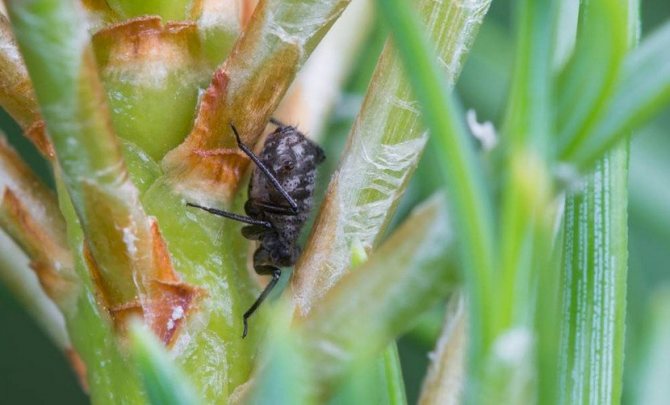

Their presence will not be able to destroy the spruce, but, sucking the juices from the tree, the aphid significantly impairs its appearance and violates the overall decorative effect.
In case of severe damage, remove the affected shoots and spray the remaining branches with an insecticidal agent such as Aktara, and then repeat spraying with Matcha and Dursban, maintaining an interval of 2 weeks between all treatments.
Hermes
The first thing that catches the eye when the spruce is affected by Hermes is the curvature and yellowing of the needles, with sticky fluffy and snow-white neoplasms on the inside. At the ends of young shoots, galls appear almost immediately in the form of bumps, which constantly grow, increase and acquire a crimson color.


Inside the affected shoot, there can be up to 120 hermes larvae, and if you look closely, adult females of the pest will be noticeable next to the buds on the bark, and on the needles - brown or yellowish-green larvae. It is the latter that are responsible for the bending and drying of the shoots, with further shedding of the needles and the death of the branches (usually occurs only in the second year after the plant is damaged by the pest).


